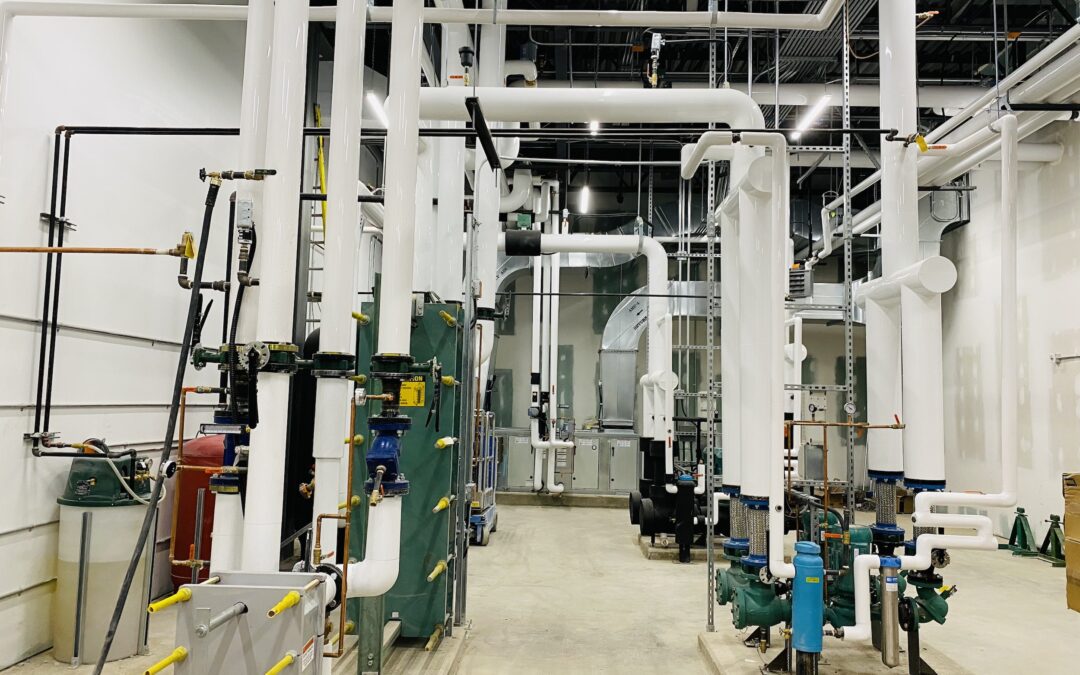Article Source: Communications Engineering – Nature
Article Link: https://www.nature.com/articles/s44172-022-00018-3
Abstract
Heat pumps will play a key role in transitioning domestic heating to fossil-free sources. However, improvement in energy efficiency and cost reduction are still needed. Current vapour-compression heat pumps are built upon the Evans-Perkins cycle which was originally designed for refrigeration applications. Once hot liquid refrigerant has transferred energy to the central heating system, it leaves the condenser with sensible heat which can be utilized. Here we report a modified and flexible Evans-Perkins heat pump cycle integrating heat recovery and storage which is then used as an ancillary heat source for the heat pump’s operation. It operates in a quasi-two-stage mode to theoretically save up to 20% in compressor power consumption compared with single-stage cycles. We build a prototype with off-the-shelf parts and demonstrate a practical 3.7% power saving at a heat production temperature of 35 °C. Power saving will further increase with heat supply temperature. We also qualitatively show that hot refrigerant exiting the condenser can be directly used for defrosting the evaporator, providing additional energy saving.
To access and read through the full results and figures, click here.
Discussion
As predicted by the ideal model, the flexible heat pump can operate on a quasi-two-stage mode to achieve an average COP up to 20% higher than conventional single-stage heat pumps under same operational conditions, depending on the heat supply temperature and working fluids. It should be noted that this is the theoretical upper limit and real systems will achieve less improvement.
A prototype built with off-the-shelf parts, with a small water tank as heat storage, has demonstrated 3.7% COP improvement when the heat production temperature is only 35 °C, achieving around 50% of the calculated theoretical upper limit under the same condensing temperature as shown in Fig. 5a. The COP improvement increases as the heat supply temperature increases almost linearly. As indicated by projection shown in Fig. 5 (i.e., around 50% of the theoretical upper limit), up to 10% COP improvement may be achieved as the heat production temperature increases to 65 °C in real systems.
The COP improvement is strongly affected by the portion of time that the flexible heat pump can operate on the discharging mode that has a higher COP. The higher the time ratio 𝛽LatentβLatent, the longer the discharging operation, and thus the higher the COP improvement. Therefore, refrigerants with a high specific heat in liquid state and a small latent heat of evaporation could achieve better COP improvement using the flexible heat pump cycle.
Both latent and sensible heat storage can deliver similar COP improvement, but a sensible heat storage using water is considered to be the most cost-effective solution. The cost of a small water tank heat storage is marginal, but the COP improvement is substantial.
For ASHP applications, the discharging mode can directly use the hot liquid refrigerant exiting the condenser for defrosting whilst maintaining continuous heating supply, which could further save energy compared with current ASHPs. The experimental results qualitatively demonstrated the hot liquid can provide heat to the evaporator, showing its potential for defrosting. Further numerical and experimental research is required to fully demonstrate and exploit this potential.
Limitation of the theoretical modelling: As described in Section 3, idealised thermodynamic models are used to find the theoretical maximum COP improvement using the flexible heat pump cycle. Such a theoretical maximum gives us a basis to gauge the performance of the prototype against what the possible maximum might be. Furthermore, the proposed flexible heat pump cycle can be applied to all heat pumps regardless of what the heat source is. In order to keep the model generic, only the conditions of the refrigerant side of the evaporator are considered. As a result, this approach has neglected the change of heat transfer conditions within the evaporator during the charging and discharging modes.
Comparing with the standard Evan-Perkins heat pump cycle, the amount of heat recovered by the heat storage during the charging mode of the flexible heat pump cycle needs to be compensated by an increase of heat transfer within the evaporator. As a result, the predicted maximum COP improvement by the above simulations may be slightly reduced. A more advanced model that considers all potential losses should be developed to provide more accurate calculations, which is however beyond the scope of this paper.
Conclusion
This paper reports an invention of the flexible heat pump which integrates heat storage into the conventional vapour-compression cycle to recover the sensible heat that is contained in the hot liquid refrigerant leaving the condenser. The recovered heat is then used as an ancillary source for the heat pump operation periodically, improving the system’s overall COP. Furthermore, the flexible heat pump cycle, through the in-cycle heat storage, potentially enables wider applications for utilising intermittent, temperature-changing, low-grade heat sources, such as external waste heat recovery and further integration with systems such as solar thermal energy collector.

